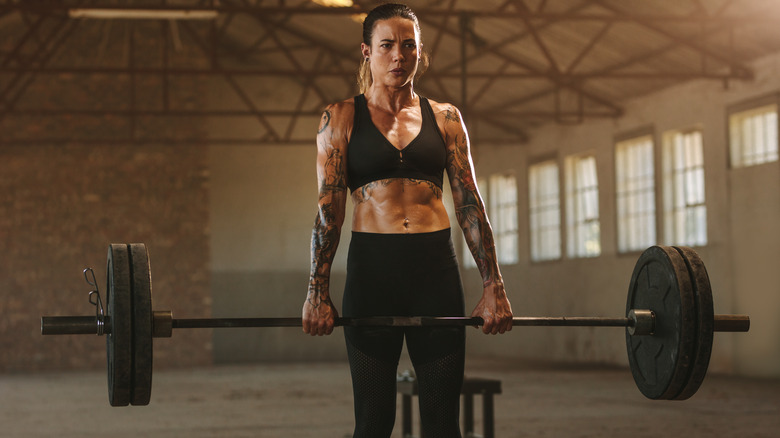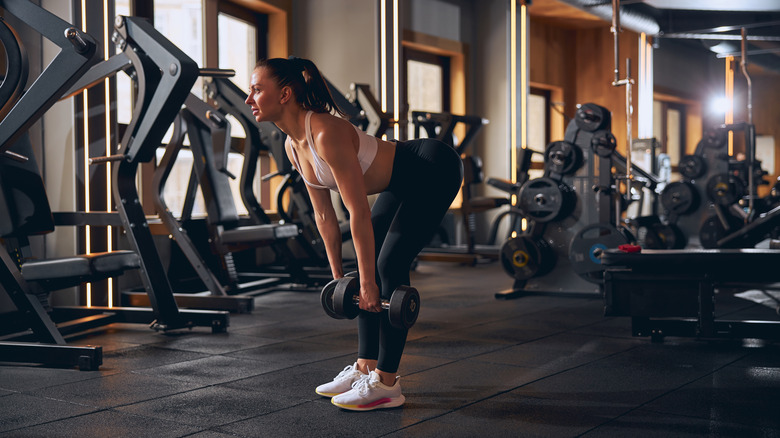What Are Romanian Deadlifts And How Do You Do Them?
Struggling with lower back pain? Or, aiming to build stronger back and core muscles? If so, consider incorporating Romanian deadlifts into your workout routine. When performed correctly, this compound movement can strengthen your back, core, hamstrings, and glutes, and reduce the risk of injury. Plus, it puts less stress on the front of your knees compared to the leg press and other quad-dominant movements, notes the American Council on Exercise (ACE).
Popular with hard-core bodybuilders, Romanian deadlifts are beneficial for everyone due to their functional nature. Functional exercises mimic real-life movements, such as squatting or bending over, and engage multiple muscles and joints simultaneously (via ACE). Including Romanian deadlifts in your workout, therefore, can make everyday activities easier and minimize discomfort. By deadlifting regularly, you'll learn to lift from your hips and spare your lower back, which may help prevent pain in the lumbar area. Moreover, this exercise hits the deep core muscles that support your spine, explains ACE. In the long run, you may find it easier to perform the barbell back squat and other heavy lifts (per Verywell Fit).
The International Sports Sciences Association says that Romanian deadlifts are far more effective than the leg curl, one of the most popular hamstring exercises (via Bodybuilding.com). First, they allow you to go heavier and "shock" your muscles into growth. Second, the deadlift is a highly functional movement that can improve posture and body mechanics. The leg curl, conversely, isolates and activates your hamstrings, but it's not a functional exercise.
How to do Romanian deadlifts with perfect form
The Romanian deadlift can be performed with a barbell, trap bar, dumbbells, or kettlebells, making it ideal for at-home workouts. But first, you must learn the technique and take the steps needed to avoid injuries. Shape recommends starting with light weights and increasing the load as you get stronger. Later, you may also try more advanced variations or change your foot position for an extra challenge.
If you're ready to give it a try, grab a barbell or two dumbbells and hold them at hip level. Stand with your feet hip-width apart without locking your knees. Squeeze your shoulder blades, brace your core, and then slowly lower the weight by bringing your hips back. Keep your knees slightly bent and your back neutral. Continue to lower the barbell until it goes past your knees, pause for a second or two, and return to the starting position in a controlled manner. Use your glutes and hamstrings to pull the weight up. Watch your posture and try to avoid common mistakes, such as arching your back or rounding your shoulders.
Bodybuilding.com warns that most gym-goers fail to maintain a neutral spine, which can lead to injury. While it's important to maintain an arch in your back, you shouldn't bend at the waist. Use your hips to initiate the movement and stop when you feel a stretch in your hamstrings. If you have tight hamstrings, you might not be able to lower the bar past your knees — and that's perfectly fine.


